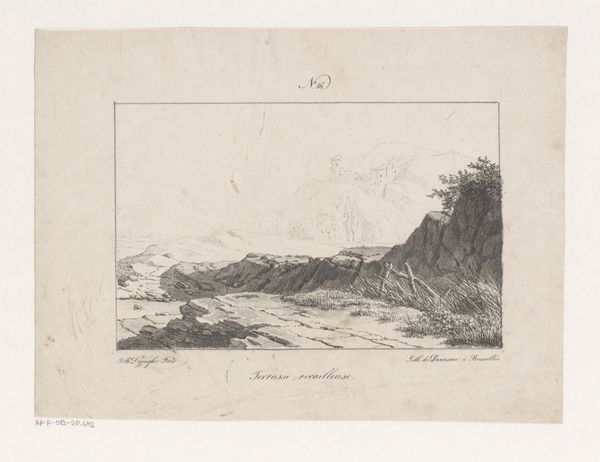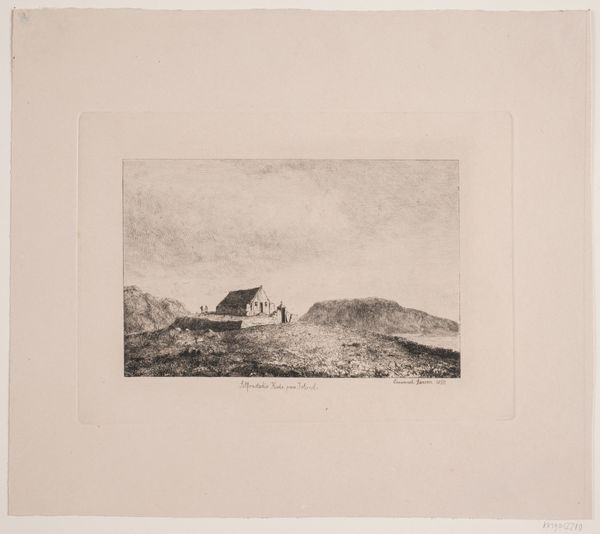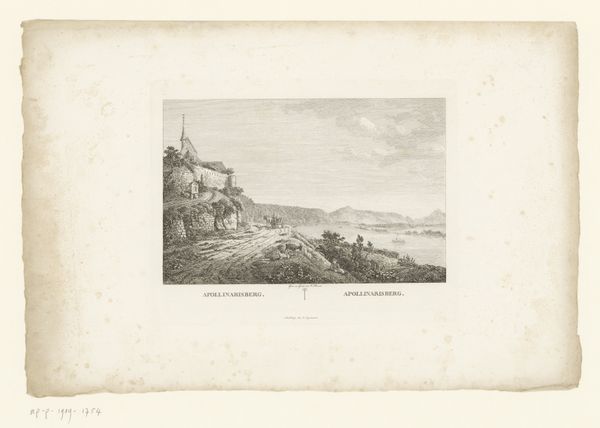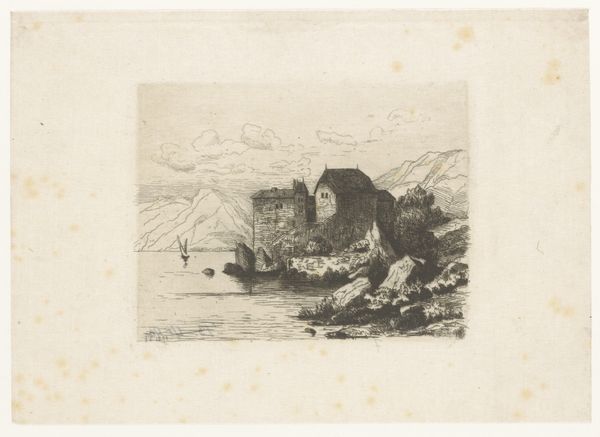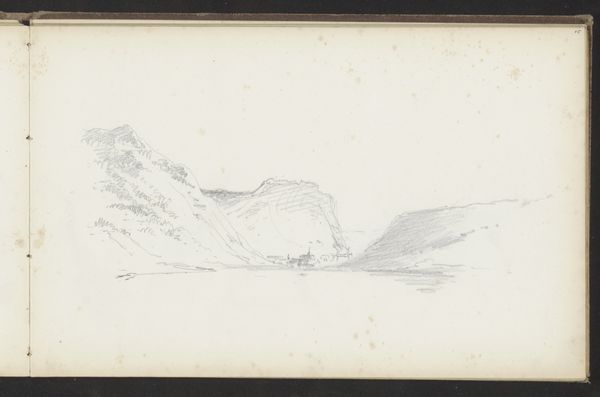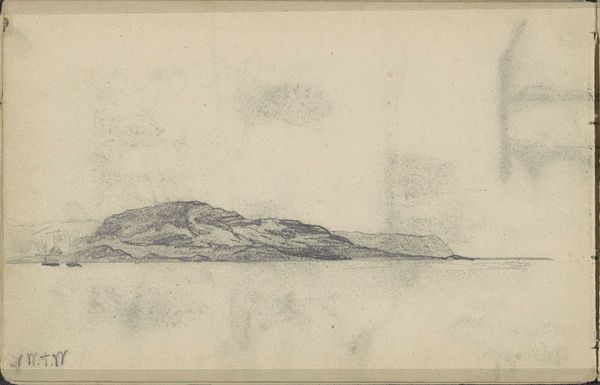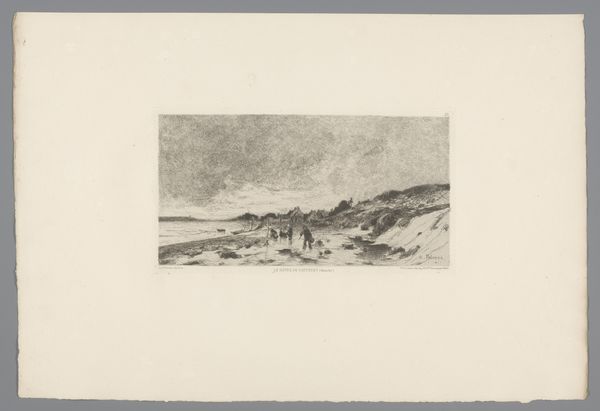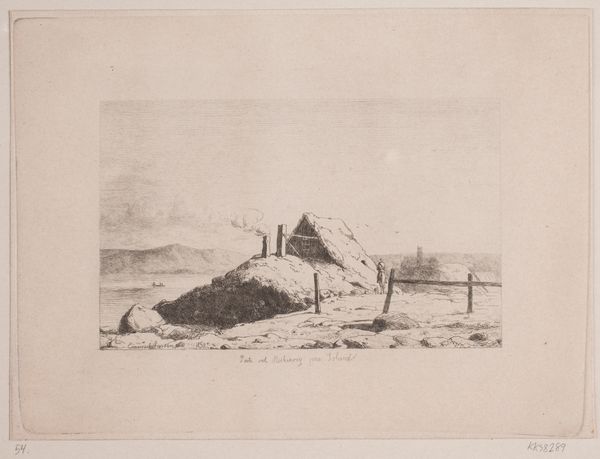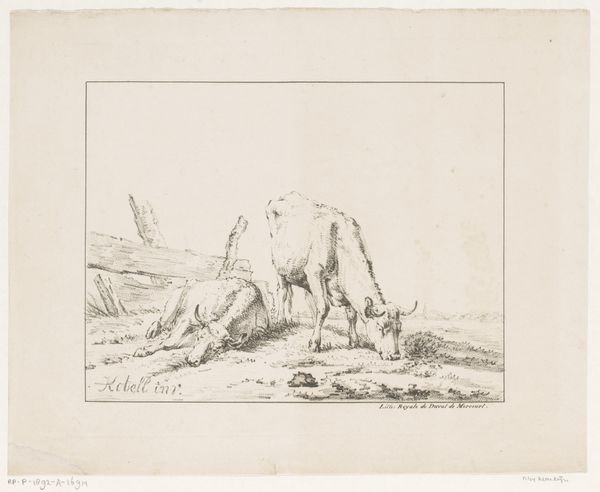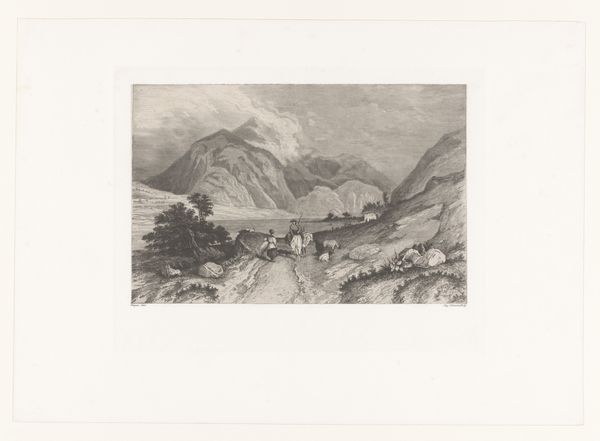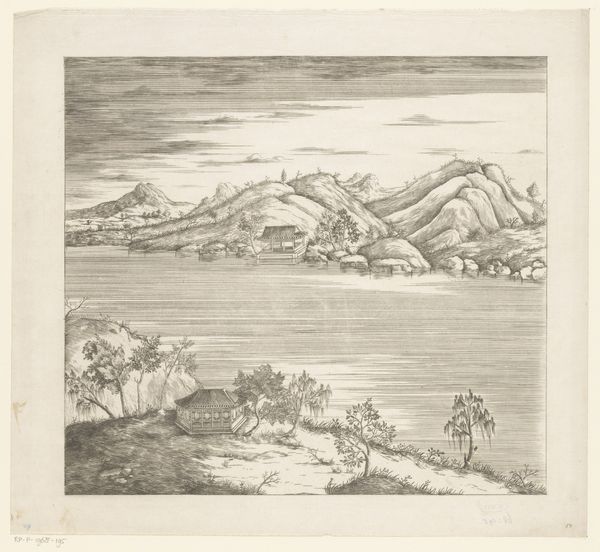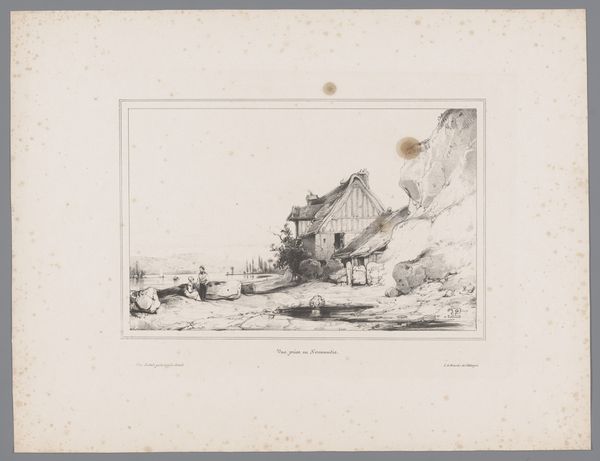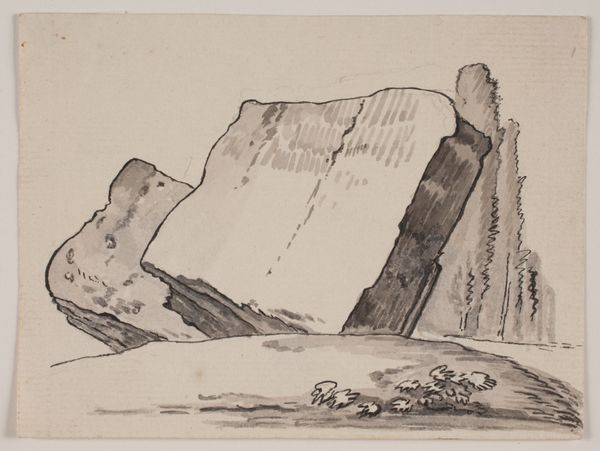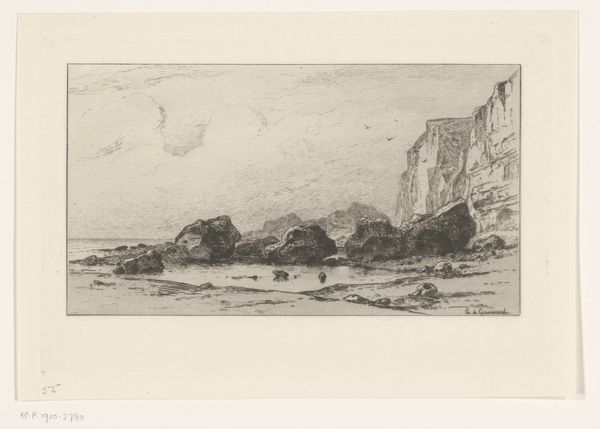
drawing, print, etching
#
drawing
# print
#
etching
#
landscape
#
etching
#
romanticism
#
realism
Dimensions: height 172 mm, width 218 mm
Copyright: Rijks Museum: Open Domain
Jacques Van Gingelen created this coastal landscape with rocks and a house by the water using etching, a printmaking technique, in the 19th century. Van Gingelen used fine lines to define the forms of the landscape, including the rocks, water, and the small house, using hatching and cross-hatching to create tonal variations. The textures and details were created by drawing through a wax-coated metal plate with a sharp needle, exposing the metal. The plate was then immersed in acid, which bit into the exposed lines, creating grooves. The plate was then inked, and the surface wiped clean, leaving ink only in the etched lines. Finally, the plate was pressed onto paper, transferring the image. The process requires careful control of time and pressure. The resulting print captures a sense of the rugged coastal environment and the solitude of life by the sea. Understanding the meticulous craft involved in etching enriches our appreciation of this seemingly simple landscape, reminding us of the labor and skill inherent in printmaking.
Comments
No comments
Be the first to comment and join the conversation on the ultimate creative platform.
